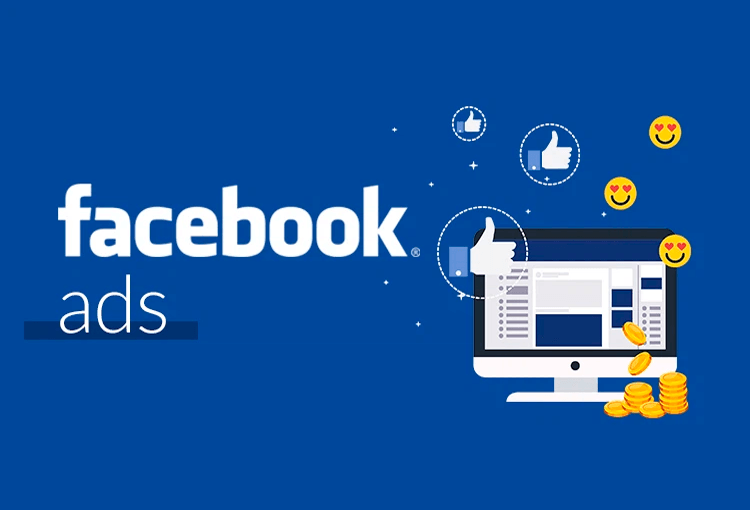Marketing
Effective Facebook Ad Formats for Moving Companies: What Works and Why

Top Facebook Ad Formats for Moving Companies That Deliver Results
Discover the top Facebook ad formats HYPE Hyperion uses to help moving companies attract more clients and simplify bookings with high-performing strategies.
Why Facebook Ads Are Vital for Moving Companies
In the fast-paced moving industry, attracting new clients requires more than just excellent service — you need effective marketing to stay competitive. Facebook, with its massive reach and precise targeting, is an ideal platform for connecting with potential customers. However, not all ads deliver the same results.
At HYPE Hyperion, we specialize in crafting high-performing campaigns tailored for moving companies. As highlighted in our analysis of moving company Facebook ads, the right ad format can mean the difference between a successful campaign and wasted budget.
The Most Effective Facebook Ad Formats for Moving Companies
1. Video Ads: The Power of Visual Storytelling
Video ads consistently outperform other formats by engaging users with dynamic content. For moving companies, videos provide an opportunity to showcase services, highlight customer testimonials, or demonstrate how the moving process works.
At HYPE Hyperion, we emphasize simplicity. We encourage businesses to create relatable, human-centric videos — often shot on smartphones — that we enhance with professional editing. This approach keeps costs low while delivering high-quality, authentic content.
Key elements of successful video ads include:
- Highlighting benefits: Show potential customers how your service makes their move stress-free.
- Adding captions: Many users watch videos without sound, so text overlays ensure your message is clear.
2. Carousel Ads: Showcasing Your Services
Carousel ads allow moving companies to display multiple images or videos within a single ad. This format is ideal for showcasing different services, such as packing assistance, furniture assembly, or storage options.
Each carousel card can include a unique call to action (CTA), directing users to specific landing pages for bookings or quotes. At HYPE Hyperion, we use carousel ads to highlight the variety of services our clients offer while maintaining a consistent visual theme to enhance brand identity.
3. Lead Generation Ads: Simplifying the Booking Process
Lead generation ads streamline the customer journey by allowing users to inquire or book directly from the ad itself. These ads use pre-filled forms, pulling information from users’ Facebook profiles to make the process fast and hassle-free.
For moving companies, this format is particularly effective for generating quotes. Users can quickly provide details about their moving needs, and the business can follow up with personalized offers. HYPE Hyperion excels in optimizing these forms to capture high-quality leads.
Strategies for Maximizing Ad Performance
A Human-Centric Approach to Content
At HYPE Hyperion, we know that authentic content resonates most with audiences. Videos and images that feel relatable — rather than overly polished — perform better. By starting with raw footage captured on smartphones and enhancing it with professional editing, we create ads that are approachable yet impactful.
Leveraging Data for Better Targeting
Effective campaigns rely on precise targeting. Using Facebook’s tools, we narrow down audiences based on factors like location, demographics, and past behaviors. For example, targeting users who have recently searched for moving services ensures ads reach those actively in need.
Retargeting to Increase Conversions
Not every potential customer converts on the first interaction. Retargeting ads — which remind users who have previously engaged with your content to take action — are a critical component of our strategy. These ads gently nudge users to complete bookings, boosting conversion rates.
What Makes HYPE Hyperion’s Approach Unique?
At HYPE Hyperion, we don’t just run ads; we craft strategies designed for real-world results. Our campaigns for moving companies focus on delivering measurable outcomes, such as increased bookings and enhanced brand visibility.
By combining creative ad formats like video and carousel ads with data-driven targeting, we ensure every campaign maximizes ROI. Our tailored approach has helped businesses across the moving industry thrive in competitive markets.
Transform Your Facebook Ads Today
Ready to see how effective Facebook ad formats can transform your moving company’s bookings? With HYPE Hyperion, you’ll benefit from proven strategies, creative expertise, and a commitment to results.
Let us help you create Facebook ads that deliver real growth.
Marketing
Power of Podcast Advertising to Drive Growth
Marketing
How to Optimize Your Logistics Company’s Website for Maximum Engagement

Introduction to Website Optimization for Logistics Companies
In today’s digital landscape, a logistics company’s website serves as its virtual storefront. It’s not just a platform for showcasing services; it’s a critical touchpoint for engaging with potential clients and partners. To stand out in a highly competitive market, optimizing your website for maximum engagement is essential. One effective strategy is to explore Leadgamp services at https://leadgamp.com/marketing-services-for-logistics-companies that can enhance your online presence and attract more visitors.
Web optimization includes a few minor changes that will enhance the user experience, optimize search engine ranking, and ultimately drive more conversions. To that effect, a logistics company should ensure its website is fast, responsive, and easy to use: prospects should easily find information about your services, shipment tracking, and support.
Effective website optimization actually goes beyond making your website look good; it’s all about understanding the behavior of your audiences and preferences. You can include data-driven insights such as keyword research and user analytics in creating the makeup and layout, so it caters to the needs of your visitors.
Logistics has become one of those industries where continuous development with technology an optimized website is not an advantage but a given, a minimum prerequisite to make your company seem trustworthy and credible within the industry where timely and accurate information is a matter of course.
Understanding Your Target Audience
This is the prime reason it’s important to understand your target audience in order to effectively optimize your logistics company’s website. Identify the key personas that exist in your market-business owners of smaller enterprises that perhaps may seek a method to ship their goods, larger businesses that are looking for freight management, or even households moving from one place to another. Each category would present a different set of needs, pain points, and expectations.
Do extended market research through surveys, interviews, and analytics to achieve a deep understanding of their preferences and habits. What pain points do they encounter in trying to find logistics services? What type of information is most vital for them? This will enable you, in the creation of your content, to speak their language on subjects that will address their very concerns, hence making your website both relevant and interesting.
Leverage this to create user-centric content that speaks directly to these personas. For instance, a small business may want to read case studies about affordable delivery options, while a corporation will read long about your fleet and technology integrations. Also, use keywords relevant to phrases that your customers identify with, to further optimize for search algorithms. By designing your website based on what your ideal audience expects, this will ultimately lead to greater involvement and conversion.
Main Features for the Website of a Logistics Company
While refining the website of a logistics company, there are several key features that can improve not only the rate of user engagement but conversion, too. Start with a design that is friendly and easy to navigate. A clean, intuitive layout helps visitors see the most important information-what services are offered, how one can track goods, contact details-in no time.
Second, establish a track record that is efficient and allows customers to view the movement of their consignment in real time. This earns trust and also retains people for longer periods on your site since they want updates.
Third, devise a responsive design; that means it easily fits in with the various types of screen sizes, especially since modern users rely on handheld mobile phones to access websites.
Add a blog/resource section to distribute insight, tips, and news about the industry. This will help in positioning your company as a thought leader in the industry and provide useful content for repeat visits.
Finally, sprinkled throughout the site should be clear calls to action, encouraging people to take desired actions-be it requesting a quote or subscribing to a newsletter. By marrying functionality with engaging content, logistics companies can create a website that attracts not only visitors but converts them into loyal customers.
Enhancing Navigation and User Experience
In today’s fast-moving digital world, your logistics company should create a website for the sake of user experience and navigational convenience that will keep your visitors longer and turn them into prospective clients. First of all, the website needs to load in no more than a few seconds; it has been determined that an extra-second delay is associated with a drastic decline in users’ engagement. Apply tools such as Google PageSpeed Insights, which help you identify the speed problems you need to fix.
Next, install navigation systems that allow access to your website easily. An effective, understandable menu structure will work toward the success of users finding information with ease. Consider adding breadcrumb navigation to help users move backward and improve your site’s SEO. Group related content logically, then use descriptive labels that reflect the terms your audience would use to search.
Also, consider mobile optimization. A lot of people now browse the internet on their smartphones, so your website should be responsive and look great on any device. Make it touch-friendly by including elements that allow users to tap on them easily, and make sure buttons are large enough to be clicked on with your finger.
Finally, enhance user experience by integrating the use of chatbots or offering live chat services. These amenities give instant responses to queries and can greatly reduce bounce rates. By paying attention to these items, your logistics website will be a friendlier place to your users, who would want to stay longer and turn into your regular customers.
SEO Strategies for Logistics Websites
In such a competitive scenario, SEO will definitely play an important role in making your logistics website stand out. Start by conducting thorough keyword research to identify what your target audience is searching for in terms of phrases or keywords, which might be “freight shipping solutions” or “logistics management software.” Integrate those keywords naturally into your website’s content, including headings, meta descriptions, and alt text for images.
After that, produce great, informative content which speaks to the needs and pain points of your customers. This includes blog posts, case studies, and industry news that establish your authority and encourage user interaction. Make your content readable by structuring it well with bullet points and subtitles.
The technical SEO also plays an important role: optimize the site for speed, provide mobile responsiveness, and give clear structure to URLs. Not to mention, of course, backlinks created by co-op advertising with industry influencers and guest posting on other relevant sites. Also, do not neglect local SEO: using keywords related to location in your content will help drive locals to your service offerings, and verify your Google My Business listing. All these practices blended together will help your logistics website achieve better positions in search results, with higher activity from users, eventually leading to business growth.
Content Marketing for Engagement
Onboard informing: educational blog posts about logistic trends and best practices, as well as current industry challenges. This will not only educate your audience but establish your company as the thought leader.
Case Studies: Highlight successful projects or partnerships that you have had to showcase your capabilities. The real-life examples are appealing to prospective clients and create some level of credibility.
Visuals and Infographics: Simplify intricate logistics processes through comprehensible, easy visuals. Infographic-based content can be used to simplify knowledge and encourage sharing on social media.
Video Content: Create interactive videos that explain your services, customer testimonials, or even a sneak peek at the work behind your operations. This form of video content increases viewer retention by a great margin.
The interactive content comes in the form of quizzes, calculators, or surveys. These will enable active user engagement with your website, retaining them longer, and at the same time help get some important data regarding audience preferences.
Using Visuals and Multimedia
In today’s digital space, visuals and multimedia have become the major tools in the capture of people’s attention and the engagement of users on your website for your logistics company. Start by embedding high-quality images of your fleet, facilities, and staff in action onto your web page. These visuals give a face to your brand but, more importantly, give your prospective clients an idea of how the business is operated.
Infographics displaying complex logistics data in an easy-to-understand format. A well-designed infographic will simplify shipping timelines, cost breakdowns, or even supply chain processes to make it simple for the visitor to understand at a glance what services you provide.
Besides, videos drive engagement. A short intro video on your core services, your customer testimonials, and behind-the-scenes looks at your operations will create an interactive experience. Also, make sure the videos are optimized for mobile since about one-third of users will be visiting your website through their smartphones.
Finally, interactive elements such as virtual tours of your distribution centers or real-time tracking demos can be added to further engage users. By strategic leveraging of visuals and multi-media, you will be keeping visitors longer on your site while turning them into loyal customers who are enthusiastic about engaging in your services.
Mobile Optimization for Logistics Websites
With the world moving at a fast pace today, mobile optimization is no longer a luxury but a necessity for every logistics company that wants to see improvements in customer engagement and client satisfaction. Since more than half of all web traffic is facilitated by mobile devices, ensuring your logistics website is mobile-friendly can significantly improve user experience and drive more conversions.
Then, responsive design automatically fits your website to whatever size screen it’s on. The idea is that visitors should have an easy time using your website, whether on a smartphone or tablet. Pay extra attention to page load times; mobile visitors tend to be on-the-go and won’t bother with slow-loading sites. Take advantage of free tools, such as Google PageSpeed Insights, that will help you identify what’s causing slowdowns.
Also, simplify navigation by cleaning up the design and making buttons larger and menus more accessible. Make the content clear and concise, as short as the attention span of its users. Make this mobile-friendly; introduce click-to-call buttons for instantaneous contact and geolocation services enabling clients to track shipments in real time.
Finally, compress images and videos for mobile use: High-quality visuals may be excellent to enhance engagement, but they really ought to be compressed to enable them to load faster. With these mobile optimization strategies, your logistics company will ensure a seamless experience that keeps your clients coming for more.
Measuring Engagement and Performance
In addition, to measure the real effectiveness of your logistics company website, one needs to assess engagement and performance through key metrics. Start by tracking user behavior, using tools like Google Analytics, which can provide insight into page views, average session duration, and bounces. For instance, high bounce rates may indicate that the landing pages have failed to impress the visitors and need to change either the presented content or even the design itself.
You’ll want to know the metrics for user engagement in the form of click-through rates of calls-to-action. Find out which calls-to-action perform really well and take them as a benchmark to drive strategic changes in your content and layouts to improve user engagement even further. Consider adding heatmaps that show where users are clicking and scrolling on pages to understand areas of high interest and to inform better layout decisions.
And last but not least, social media engagement and referral traffic are good indicators of the performance of your website. Shares, comments, and likes on your posts can give you insight into how well your audience really received your content. Lastly, establish goals and KPIs specific to your business objectives, whether lead generation or the inquiry of services, to properly evaluate the success of your website. By going through these metrics regularly, you can enable yourself to make decisions based on data-driven insights and further improve the user experience of your website.
Conclusion and Future Trends in Logistics Website Optimization
In essence, the optimization of your logistics company website is a journey that calls for constant concern for both current best practices and trends that are beginning to emerge. As technology evolves, so will the expectations of your customers. Most likely, in the future, website optimization will depend more on artificial intelligence and machine learning so that personalized user experiences are catered to way in advance before clients’ needs actually materialize.
Voice search and smart devices are altering the way potential clients seek logistic solutions. Websites need to become more adaptive, embracing conversational interfaces that interactively engage users in real time. AR can also contribute much in making customers believe in trust and transparency, letting them virtually see the shipment process or how goods are organized in the warehouse.
It is clear that with sustainability leading the theme for logistics, integrating eco-friendly best practices into your website-not just in content, but in design-will resound with socially conscious consumers.
Essentially, website optimization in the future should revolve around three aspects: the core of user experience, leveraging technological advancement, and emulating the way business is going ‘green’. With these trends ahead, your logistics company will be able to construct an appealing digital presence that drives engagement and forges lifelong relationships with customers.
Marketing
Innovative Strategies for Leveraging Bought Instagram Followers to Enhance Your Brand

Innovative Strategies for Leveraging Bought Instagram Followers to Enhance Your Brand
Imagine your Instagram feed buzzing with activity and capturing attention as if you’ve been a social media sensation all along. What if a strategic boost in followers could transform your brand’s online presence and unlock new opportunities? Buying Instagram followers isn’t just about boosting numbers; it’s about using those numbers as a catalyst to elevate your brand’s reach and engagement. In this article, we’ll explore how to effectively harness the power of purchased followers, turning them into a potent asset for your brand’s growth. We’ll also discuss how tools like the SMM Panel and options to buy Instagram views can amplify your strategy.
1. Create High-Quality, Engaging Content
After investing in Instagram followers, the next crucial step is to ensure your content stands out. The increase in follower count provides an excellent chance to experiment with various content types and see what resonates best with your audience. Focus on producing high-quality posts that align with your brand’s identity. Whether through visually appealing images, compelling captions, or insightful videos, engaging content is vital for retaining and growing your follower base.
Example: Utilize the surge in followers to debut a new content series or highlight customer testimonials, which can drive engagement and reinforce your brand’s credibility.
2. Utilize Instagram Stories and Reels
Instagram Stories and Reels are powerful tools for driving interaction and engagement. Leverage these features to offer behind-the-scenes glimpses, conduct polls, or showcase user-generated content. With a larger follower base from buying Instagram views, your Stories and Reels have the potential to reach a wider audience, enhancing your brand’s visibility and building a stronger connection with your followers.
Example: Host interactive Q&A sessions or live product demonstrations through Instagram Stories. This approach engages your bought followers and fosters a sense of community around your brand.
3. Run Targeted Advertising Campaigns
Pair your bought followers with targeted Instagram ads to reach a more relevant audience. Use insights from your purchased follower base to refine your ad targeting, which helps attract potential customers who are more likely to be interested in your offerings. This strategy maximizes the return on your advertising investment.
Example: If your bought followers show interest in specific products, tailor your ad campaigns to highlight those products. This focused approach can drive more qualified traffic to your profile and website.
4. Foster Authentic Engagement
Maintaining a vibrant Instagram presence requires genuine engagement. Interact with both your purchased and organic followers by responding to comments, liking their posts, and participating in relevant conversations. Building authentic relationships helps create a loyal community and promotes meaningful interactions.
Example: Regularly engage with followers through comments and direct messages. Consider running giveaways or contests to boost engagement and generate excitement about your brand.
5. Leverage Analytics for Continuous Improvement
Use Instagram’s built-in analytics or third-party tools to track the performance of your posts and campaigns. By analyzing metrics such as engagement rates, reach, and follower demographics, you can gain valuable insights into the effectiveness of your strategies. Use this data to make informed decisions and refine your approach.
Example: Determine which types of content generate the most engagement among your bought followers. Adjust your content strategy based on these insights to optimize overall social media performance.
6. Integrate Bought Followers into a Broader Strategy
Incorporate bought followers into a comprehensive social media strategy that includes organic growth and other marketing efforts. Use the initial boost from purchased followers to enhance your overall approach, including content creation, community engagement, and brand promotion.
Example: Combine your bought follower strategy with influencer partnerships or collaborative campaigns to extend your reach and encourage more authentic engagement.
Buying Instagram followers can effectively enhance your brand’s social media presence, but its success hinges on how you leverage these followers. By focusing on creating engaging content, utilizing Instagram’s features, running targeted ads, and fostering authentic interactions, you can maximize the benefits of purchased followers and elevate your brand’s visibility. Additionally, integrating tools like an SMM Panel and options to buy Instagram views into your strategy can further amplify your social media efforts. By adopting these innovative strategies, you’ll be well on your way to achieving sustainable growth and building a strong online presence.
-

 Business1 year ago
Business1 year agoSaudi Arabia’s Model for Sustainable Aviation Practices
-

 Business1 year ago
Business1 year agoRecent Developments in Small Business Taxes
-

 Politics1 year ago
Politics1 year agoWho was Ebrahim Raisi and his status in Iranian Politics?
-

 Business11 months ago
Business11 months agoCarrectly: Revolutionizing Car Care in Chicago
-

 Business11 months ago
Business11 months agoSaudi Arabia: Foreign Direct Investment Rises by 5.6% in Q1
-

 Technology1 year ago
Technology1 year agoComparing Apple Vision Pro and Meta Quest 3
-

 Politics1 year ago
Politics1 year agoIndonesia and Malaysia Call for Israel’s Compliance with ICJ Ruling on Gaza Offensive
-

 Sports10 months ago
Sports10 months agoKeely Hodgkinson Wins Britain’s First Athletics Gold at Paris Olympics in 800m

























